Great choice! Your favorites are temporarily saved for this session. Sign in to save them permanently, access them on any device, and receive relevant alerts.
- Sailboat Guide
Val 31 is a 31 ′ 2 ″ / 9.5 m trimaran sailboat designed by Dick Newick starting in 1977.


Rig and Sails
Auxilary power, accomodations, calculations.
The theoretical maximum speed that a displacement hull can move efficiently through the water is determined by it's waterline length and displacement. It may be unable to reach this speed if the boat is underpowered or heavily loaded, though it may exceed this speed given enough power. Read more.
Classic hull speed formula:
Hull Speed = 1.34 x √LWL
Max Speed/Length ratio = 8.26 ÷ Displacement/Length ratio .311 Hull Speed = Max Speed/Length ratio x √LWL
Sail Area / Displacement Ratio
A measure of the power of the sails relative to the weight of the boat. The higher the number, the higher the performance, but the harder the boat will be to handle. This ratio is a "non-dimensional" value that facilitates comparisons between boats of different types and sizes. Read more.
SA/D = SA ÷ (D ÷ 64) 2/3
- SA : Sail area in square feet, derived by adding the mainsail area to 100% of the foretriangle area (the lateral area above the deck between the mast and the forestay).
- D : Displacement in pounds.
Ballast / Displacement Ratio
A measure of the stability of a boat's hull that suggests how well a monohull will stand up to its sails. The ballast displacement ratio indicates how much of the weight of a boat is placed for maximum stability against capsizing and is an indicator of stiffness and resistance to capsize.
Ballast / Displacement * 100
Displacement / Length Ratio
A measure of the weight of the boat relative to it's length at the waterline. The higher a boat’s D/L ratio, the more easily it will carry a load and the more comfortable its motion will be. The lower a boat's ratio is, the less power it takes to drive the boat to its nominal hull speed or beyond. Read more.
D/L = (D ÷ 2240) ÷ (0.01 x LWL)³
- D: Displacement of the boat in pounds.
- LWL: Waterline length in feet
Comfort Ratio
This ratio assess how quickly and abruptly a boat’s hull reacts to waves in a significant seaway, these being the elements of a boat’s motion most likely to cause seasickness. Read more.
Comfort ratio = D ÷ (.65 x (.7 LWL + .3 LOA) x Beam 1.33 )
- D: Displacement of the boat in pounds
- LOA: Length overall in feet
- Beam: Width of boat at the widest point in feet
Capsize Screening Formula
This formula attempts to indicate whether a given boat might be too wide and light to readily right itself after being overturned in extreme conditions. Read more.
CSV = Beam ÷ ³√(D / 64)
Prototype was ‘Third Turtle, 2nd in the 1976 OSTAR. A popular and successful shorthanded racer of this time due to its proven seaworthiness and a relatively low cost of construction. Built by the designer and from plans by many others. It is said that at least 30 boats have been built to this design.
Embed this page on your own website by copying and pasting this code.
- About Sailboat Guide
©2024 Sea Time Tech, LLC
This site is protected by reCAPTCHA and the Google Privacy Policy and Terms of Service apply.
Val In Distress 31 foot trimaran, San Rafael, CA
By dick newick.
source: Newick Val trimaran in distress - Multihull Anarchy (SA)
"A friend has looked at a Newick Val in the Bay Area. It will be crushed in a couple of weeks if a new owner cannot be found. My understanding is it can be had for the leans against it $2500"
bcms.bc.ca/pipermail/members_bcms.bc.ca/2013-September/000192.html
- Brand: Trimaran
- Model: Val 31 full wing
- Dimensions: 31 ft in length by 24.5 ft in width
- Designer: Dick Newick
- Builder: Martyn Bridgman
- Year completed: 1981
- Boat Name: Nandi
- Material: Fiberglass, Epoxy, Klegecell Foam Core in the decks, bulkheads and akas
- Sails Included: Main sail, Jib, Storm Jib, Genoa & Spinaker
- Outboard Engine: Not included in sale
- Weight approx: 2000 lbs
- Speed: Capable of going up to 20 knots
- Racing: Classic Vintage Racer. Sistership design (Third Turtle) came in 2nd in the OSTAR 1974
- Location: Union Bay, Vancouver Island, BC, Canada
- Details: The boat is currently on land, REPAIRS HAVE BEEN DONE. Needs some more TLC, paint etc... Priced to sell to a good home! Call for details and for current pictures!
bcms.bc.ca/pipermail/members_bcms.bc.ca/2014-March/000283.html ("It's in union bay on Vancouver island!")
wattsup?withthat.com/2014/08/01/boat-delivery
Newick Home Page
see trimaran Val
All Designs
- About the SA Forum
- Join the Forum
- Terms of Use
- Privacy Policy
- View All Listings
- Submit a Photo
- Submit an Article
- Contact the Site Administrator
- Contact the editor

31′ Trimaran Newick Val for sale
1980 Newick Val, in very good condition and ready to go.
Much modified and upgraded: new float bows, New F31R mast and rig with synthetic stays and new 1×19 forestay, new custom tiller, rudder and kick up cassette, new GPS, VHF, log, and Pelagic autopilot, custom carbon pulpit and sprit, new hatches, all new wiring and panel, new battery, 9.8 Tohatsu 2 stroke, 3 jibs, laminated main, 2 spinnakers, 2 screechers, Harken roller furler, boom bag and lazy jacks, upgraded clutches, traveler, mainsheet, and hardware, new rotating step, plumbed head, 2 berths, inflatable dinghy and paddleboards.
31′ x 25′ x 2.5′ (6′)
After 19 years in publication, Sailing Anarchy has remained true to its roots as a community oriented, edgy sailing publisher. We have long been, and will continue to be, the leader in providing inside stories, great reports from around the globe, along with the informative, snarky, profane coverage that you have come to expect. Others come and go, dilly dally with bullshit, while we remain Anarchists to the core.

Copyright 2010-2022 Sailing Anarchy, Inc.
- Boats for Sale
- Val 31 Trimaran
Boats similar to Newick Val 31 Trimaran
1978 pearson 323 for sale.
Punta Gorda, Florida
OFFERED BY:
Pier One Yacht Sales
1985 O'day Boats 35 for sale
Bloomington, Indiana
1990 Maxi Yachts Center Cockpit for sale
Cape Canaveral, Florida
United Yacht Sales
1985 Hunter 34 for sale
Bridgeport, Connecticut
Brewer Yacht Sales
1984 Express 35 for sale
Annapolis, Maryland
Annapolis Sailyard
1982 Endeavour 32 for sale
Camden, Ohio
1982 Union Polaris for sale
Honolulu, Hawaii
1990 Catalina 34 MKI for sale
Antioch, California
Boat not available.
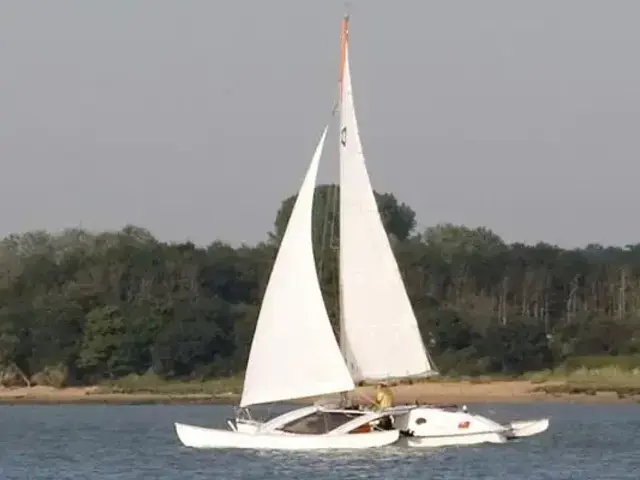
Newick Val 31 Trimaran for sale in Suffolk Office United Kingdom
Suffolk Office United Kingdom
Make & Model
Newick Val 31 Trimaran
MEASUREMENTS
Description.
A good example of this classic Dick Newick design, the Val 31 is an easy and rewarding boat to sail and guaranteed to make you smile. Dick Newick famously commented. “I can give you 20 knots and a snug place to eat and sleep, but I can’t give you luxury and performance and low cost at the same time; nobody can”. The Val 31 is a well proven design with an enviable track record for quick and safe ocean crossing.
A good example of this classic Dick Newick design, the Val 31 is an easy and rewarding boat to sail and guaranteed to make you smile. Dick Newick famously commented. “I can give you 20 knots and a snug place to eat and sleep, but I can’t give you luxury and performance and low cost at the same time; nobody can”. The Val 31 is a well proven design with an enviable track record for quick and safe ocean crossing. The interior layout is perfectly comfortable for the singlehander with an additional crew berth forward, though entirely unsuitable for a family over a wet weekend! All sail handling can be done from the safety of the cockpit and a lot of thought has been given to the ergonomics of handling the sheets and halyards. The cockpit is deep and safe and inspires great confidence in bad weather offshore.
Viewing by appointment through our Suffolk Office 01473 659 681.
Accommodation
The accommodation offers two berths in two cabins. In the aft cabin, there is a comfortable single berth with marine toilet under. There is a removable chart table and full navigational instrumentation. A small galley comprises a sink with manually pumped water supply and a small gas hob. 50 litre freshwater capacity in two jerrycans. There is stowage space under the berth and also under the cockpit, together with shelving and other stowage above the berth. There is access to the forward cabin from either the cockpit or foredeck. There is a single berth forward with stowage under. Stowage in the forecabin under the cockpit for fenders and warps.
Mechanical Systems
Located on a lifting bracket to port, Marine 6hp single cylinder outboard engine (new 2013). Hand start. Remote 5 gallon fuel tank. Forward and reverse gears. The engine has been fully serviced from new. Maximum speed under power 6 knots. Cruising speed 4 knots. Range under power is about 80 miles. Running time to date approximately 50 hours. Annually winterised and serviced.
Electrical Systems
- 12 volt 120 amp hour battery (2015)
- Solar panel
- Solar panel regulator
- 12 volt fluorescent lighting in both cabins
- LED back-up lighting
- 12 volt switch panel
- Battery monitor
Spars & Sails
Fractionally rigged sloop. Anodised aluminium mast and boom. The mast is rotatable for added performance, though kept in a fixed position by the present owner. Stainless steel standing rigging (2014). Terylene running rigging (renewed as required). Slab reefing fully battened mainsail (3 x reefs) with Harken cars (2010). Harken headsail furling system (2014). Two Harken 35.2 self tailing sheet winches (2010). Harken 35.2 self tailing halyard winch (2015). Harken mainsheet system (2014). All sail handling is done from the safety of the deep cockpit and has been ergonomically designed for ease of use. There are running backstays for improved windward performance, but these are not necessary for the integrity and safety of the rig.
- Mainsail - Ullman - 2010 - good
- Furling genoa - Ullman - 2010 - good
- No 4 furling jib - good
- Spinnaker - good
Deck Equipment
- Stainless steel pulpit with guardwires and netting
- Anchor with chain and warp
- Large mooring cleat forward with fairleads port and starboard
- Trampolines port and starboard
- Liferaft cradle
- Various warps and fenders
Navigation Equipment
- Plastimo steering compass (2015)
- Nasa Clipper Duet depth, boatspeed and log (2013)
- Nasa Clipper windspeed and direction (2013)
- Nasa Clipper closehauled repeater (2013)
- Nasa Clipper Navtex
- Nasa SSB receiver
- Garmin 556 chart plotter
- Garmin GP72 GPS
- Standard Horizon DSC VHF radio
- Simrad TP 32 autopilot
- Furuno radar
- Echomax radar target enhancer
- Nasa Clipper AIS receiver
- Prosser barometer
- Masthead (LED tricolour) and deck level navigation lights
Safety Equipment
- Manual bilge pump
Construction
Built in 1982 by Daffy Duck Marine to a design by Dick Newick. White painted GRP hull and amas with style stripes. White GRP superstructure with grey painted non-slip to deck. The hull, superstructure, beams and amas are single skin GRP with Kevlar reinforcement. There is a watertight bulkhead under the cockpit separating the forward and aft cabins, and another watertight bulkhead forward The cockpit seating and seat backs are a later addition and are built in foam sandwich. All interior woodwork was removed by the present owner and replaced with lightweight carbon/foam sandwich panelling. The beams and amas are demountable to allow road transportation or by shipping container (mast length is 39ft). Centre self draining cockpit. Lifting skeg hung rudder. Tiller steering. Lifting centreboard. The hulls were epoxied in 2010 as a preventative measure. New chainplates fitted 2014. 2012 survey.

Additional Comments
Having bought her in 2012, the owner refitted Aerodrama with a new interior, full electronics package, new Harken headsail furling and Harken mainsheet system. In particular, the cockpit has been optimised for easy sail handling and comfortable sailing. He has cruised the East Coast, South Coast, West Country and Southern Ireland, mostly singlehanded, and she has proved to be a capable, seaworthy and fast boat. Top speed this year was 18 knots with the boat fully loaded for a two week trip to Ireland. In light trim, 20 knots is achievable in the right conditions. The designer, the late Dick Newick, was a master at his craft and his Val 31 design has proved to be fast and seaworthy, with several OSTAR races completed safely despite appalling conditions.
Engine Location
Engine Horse Power
Engine Hours
Max Speed Knots
Cruising Speed
Propeller Type
Engine Count
ADDITIONAL INFORMATION
Hull Material
Dick Newick
Engine Type
Engine Year
Displacement(kgs)
1200 kilograms
Lifting Keel
Water Tanks Capacity
Fuel Tanks Capacity
0.76 meters
ABOUT NEWICK VAL 31 TRIMARAN
The Newick Val 31 Trimaran is 31 feet long and has a 25 feet beam and a draft of 1.52 meters. This 1982 Petrol Newick Val 31 Trimaran powered by Mariner 6 with 6.0 horsepower is capable of reaching a maximum speed of 6 knots and a cruising speed of 4 knots. The Newick Val 31 Trimaran is made of fiberglass.
SIMILAR LOCATIONS
- Trimarans in United Kingdom
- Boats in United Kingdom

Dick Newick Val 2 Dick Newick Val Single Handing Ocean Crosser
Used yachts for sale, sailing tris over 31ft, dick newick boats for sale, dick newick val 2 boats for sale.
- Register / Login
A password will be e-mailed to you
Reset Password

More information
Image gallery, floor plans.
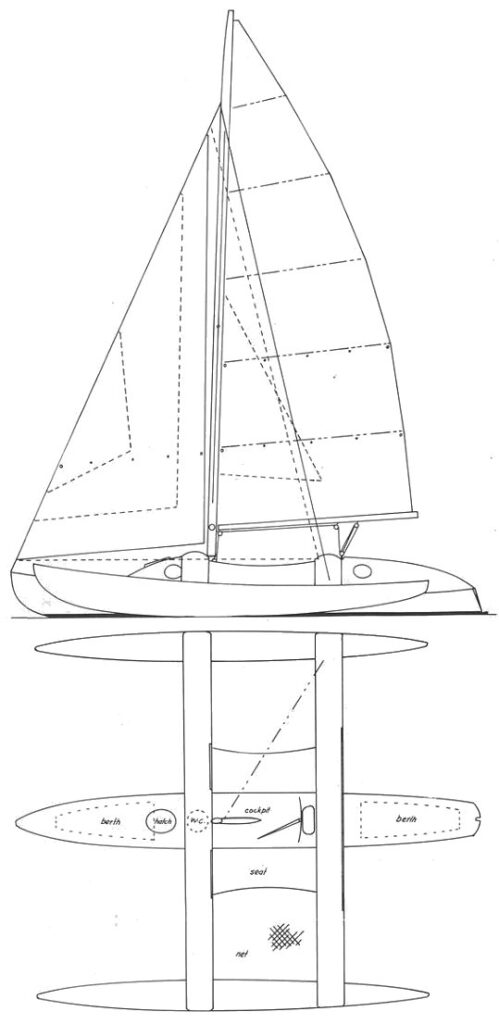
Use the form below to contact us!
- MarketPlace
- Digital Archives
- Order A Copy

Responsive Damfino is a classic Newick tri
From the Morris 36 to mega-W-class beauties, a growing fleet of elegant day sailers with minimal accommodations reflect the resurgence in demand for boats honed to make fun, fast jaunts or quickly reach and explore favorite cruising nooks for a weekend. Typically, though, these boats have reverted to the classic aesthetics of western yachting’s past eras. Shedding new light on this field comes the design Spark , realized in the recently built Damfino , from Dick Newick’s innovative design board. Newick also values Western traditions. “I’ve always been a great disciple of L. Francis Herreshoff’s writings and designs,” he says. He’d owned a Herreshoff kayak early in his career, and even the design for Spark , which Newick calls “a three-hulled Rozinante , a gentleman’s day sailor,” tracks L. Francis’s wake.
If modern multihulls can claim to be classics, Newick has contributed more than his share. His shapely plywood trimarans have remained in charter service since their launchings in the 1960s. His fleet of historic racing machines includes Moxie, with which the late Phil Weld won the 1980 Observer Single-handed Trans-Atlantic Race (OSTAR), and the Atlantic Proa Cheers, a boat form he invented. Newick virtually created the fully sculpted multihull, too, not the easiest to build with nary a straight line in sight, but as organically functional as, and at home with, dolphin and birds of the pelagic realm.
For Newick, getting a boat to feel alive at sea, at ease with wind, wave and pure speed, has always trumped loading it down with what he calls “all the modern inconveniences.” Indeed, Damfino , the elegant prototype of the Spark design built by Jim Conlin, lacks not only air conditioning and fridge, but also inboard engine, windlass and even stays. From her demountability for transport, self-tacking sails, big comfy cockpit, and a sturdy, skeg-hung rudder to daggerboard canted forward to reduce tip vortices, Damfino combines practicality with performance optimization.
The 65-year-old Conlin is no snubber of tradition either, but his Alberg 35 had become a bit much for day sailing. Conlin saw in Spark something that didn’t require athleticism or difficulty to get underway quickly or to make lots of knots. Like Rozinante , Damfino would prove easy on the eye and across the sea.
Conlin had considered production boats, like the Ian Farrier-designed F-series trimarans, but found Spark ‘s hull shapes and weight less compromised by the folding systems F-boats employ. He used glass and epoxy over Core-Cell foam core, with carbon in the cross-arms (akas) and carbon masts to create a boat less than a ton empty, 3,000 pounds loaded, so Damfino slips along effortlessly.
The main hull is classic Newick, with springy sheer, well-flared bow, and very slim lines. Newick chose to mirror Rozinante ‘s canoe stern, though he prefers employing transoms, but all his boats are very V-d aft and nearly double ended anyway. The amas, or outer hulls, reveal a more notable Newick evolution. His early amas all featured lots of sheer and rocker, with sections sharply V-d and volumes that would float a bit more than the total boat’s weight if the ama could be pressed under water. His recent Traveler 48 showed influence from Euro-racers whose amas became as long and straight as pointy-ended cigars and displaced up to twice the boat’s weight, but they were honed for power reaching and flying the main hull in winds in the teens. They give a much bouncier ride close reaching and upwind. The Travelers are less extreme, but Damfino devolves further. The amas submerged would still displace a hefty 140 percent of total boat weight to maximize power and keep the akas well above water, but Newick uses almond-shaped sections (points down) and has returned to using significant rocker on the ama bottoms to soften the ride, particularly upwind, and sweeping sheer to keep the ends up. Tiny transoms should not drag water because, by the time they are depressed, the boat will be going quite fast, enough to avoid it.
Damfino can sail up to the wind speed from 2 to 12 knots, and in stiff winds can clock 10 to 13 knots to windward and close reaching the high teens off the wind. As the boat accelerates into the teens through oncoming chop, the windward bow wave can slash off the main hull’s flare and get blown back up and to leeward, “giving you the firehose experience” in the cockpit says Conlin, but one must accept that typical cost of speed, and Conlin will soon fit a dodger. Peter Johnstone grew up with performance boats, being part of the Johnstone clan that created J-boats. As principle of Gunboat catamarans, he’s also a veteran performance-multihull sailor. After a shakedown spin on Damfino , he concludes: “On a reach, the thing was just magical. It was wet, but as you would expect at that size (and doing 18 knots). It has a comfy cockpit and did everything it was meant to do &mdash a simple, comfortable, fast day sailer for an older guy who’s going to be short handed.”
Simple sail handling is aided by self-tacking sails on unstayed carbon sticks. Newick developed his cat-yawl rig starting with an earlier 36 footer White Wings . Damfino ‘s 35-pound mizzen is a rather conventional full-battened sail with wishbone boom, which helps control twist when using a sheet to the centerline. The 130-pound mainmast supports a modified Lungstrom rig, first developed in the 1930s, with double-panel mainsail set on sail tracks. Sailing downwind, one can open the mainsail to fly its port and starboard panels wing and wing. Conlin can stretch the windward panel out and forward as he bears off, allowing the crew to tack downwind, a preferred tactic for speed and comfort, even for quite modest performers, but one Newick thinks would be enhanced using a whisker pole. High-molecular-weight plastic mast bearings allow the crew to easily rotate the mast to reef, even in heavy airs, but as the sail rolls, it does shift the center of effort well forward, making the mizzen essential to maintain balance. A mizzen staysail, which can be turned upside down to form a jib on the foremast, would increase horsepower even more, especially in very light airs, but Conlin finds the boat’s performance quite adequate without them.
Like all prototypes, Damfino has had to face her compromises and teething aches. He’s had to tune the stiffness of the vertical carbon battens on the main. Cutting and setting sails to accept what can become several feet of bend in the unstayed mast also is an art. Conlin acknowledges that you really don’t want to be caught having to short tack out a channel, because the boat needs to get up to speed to come around. The flat mizzen can help stall a tack by pushing the boat back into the wind, so Conlin has learned to sometimes ease it off. The amas also sit 2 inches lower than designed, says Conlin. On a racing machine, if the boat could remain perfectly balanced at rest, the amas would both hover well above the water. In reality, the racer leans over on one side, then flops over as the boat sways about, a discomfort for cruisers but essential when tacking an extremely wide boat so that it doesn’t have to drag its long leeward ama around in a big arc before the ama lifts and allows the boat to come off on the new board. Damfino ‘s amas steady her at anchor, but Conlin plans to raise them on future boats to aid tacking.
As for cruising, some sailors will always wince at the paucity of staterooms in this 28-footer, but even on his smallest designs, Newick always has supplied the essentials to an offshore crew &mdash a secure and generous berth, place to navigate and galley space. Damfino features a big double berth and enough counter space for a small cooker and compact nav station, which these days may require not much more than a GPS. Conlin plans little cruising, but Johnstone concludes, “I could see cruising that boat in the Exumas for a month or two, no problem,” a trip enhanced by the boat’s minimal working draft of 2 feet (depth of rudder; board up). He adds, “The boat has a lot of room below,” and though that may be a relative measure, Newick echoes quite a rational cruising brief: “I could spend summers on that boat alone or take Pat (his wife) on weekend cruises.”
Newick would not hesitate to take the boat offshore to Bermuda, either. Although small for such purpose, Damfino is a powerful successor to Newick’s famous 31-foot Val trimarans, which are not much bigger and have sailed across oceans many times, including one placing second in the storm-ridden 1976 OSTAR, finishing right behind a maxi-racer (and penalized 236-foot schooner). There’s good reason Newick was inducted into the North American Boat Designers Hall of Fame, and Damfino is sure to spark continued interest in all his boats.
Steve Callahan is a sailor, naval architect and author of the book Adrift: Seventy-Six Days Lost at Sea , which tells the tale of his struggle for survival after his boat sank in the Atlantic. He is also co-author of Capsized.
By Ocean Navigator
Visit our Popular Forums
- Monohull Sailboats
- Multihull Sailboats
- Powered Boats
- General Sailing
- Antares Yachts
- Fountaine Pajot
- Lagoon Catamarans
Cruising Business
- Boat Classifieds
- General Classifieds
- Crew Positions
- Commercial Posts
- Vendor Spotlight
Life Aboard a Boat
- Provisioning: Food & Drink
- Families, Kids, & Pets Afloat
- Recreation, Entertainment, & Fun
- Boat Ownership & Making a Living
- Liveaboard's Forum
Seamanship, Navigation & Boat Handling
- Seamanship & Boat Handling
- Training, Licensing, & Certification
- Health, Safety, & Related Gear
- Rules of the Road, Regulations, & Red Tape
Engineering & Systems
- Const. / Maint. / Refit
- Product / Service Reviews
- Electronics: Comms / AV
- Electrical: Batts / Gen / Solar
- Lithium Power Systems
- Engines & Propulsion
- Propellers & Drive Systems
- Plumbing / Fixtures
- Deck Hdw: Rigging / Sails
- Aux. Equipment & Dinghy
- Anchoring & Mooring
Photo Categories
- Member Galleries
- Life Onboard
- Sailing in the Wind
- Power Boats
- Cruising Destinations
- Maint. & Boat Building
- Marine Life
- Scuba Diving & Divers
- General Photos
Recent Photos

Listing Categories
- African Cats
- view more »
- Crew Wanted
- Crew Available
- Enhance Your Account
- Meet the Mods
- Meet the Advisors
- Signup for The Daily Cruiser Email

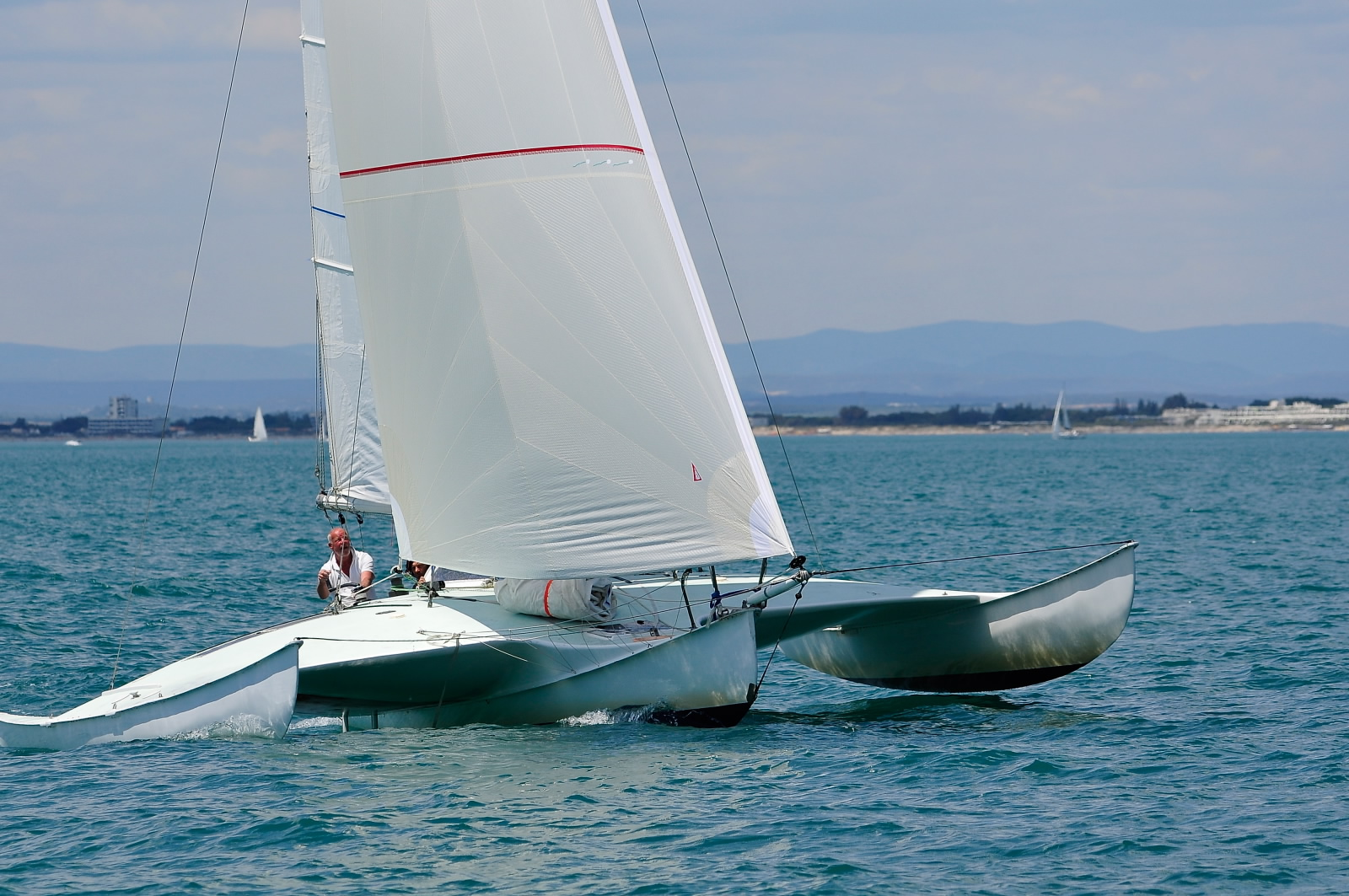
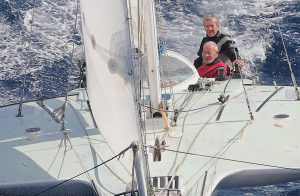
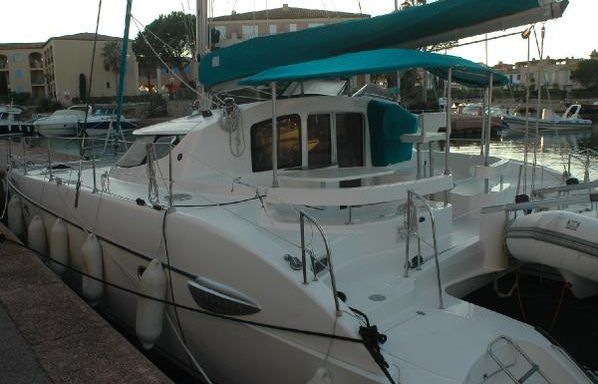
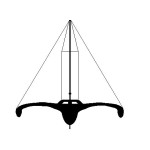
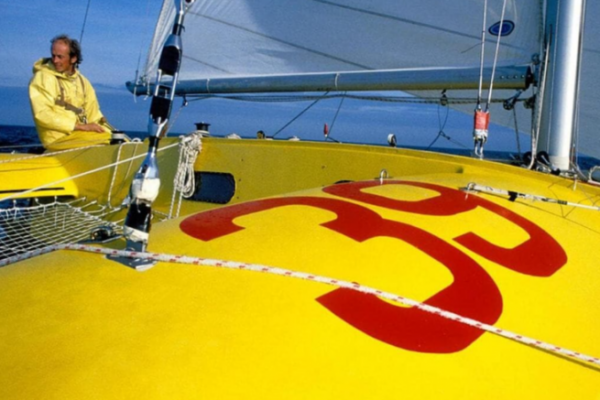
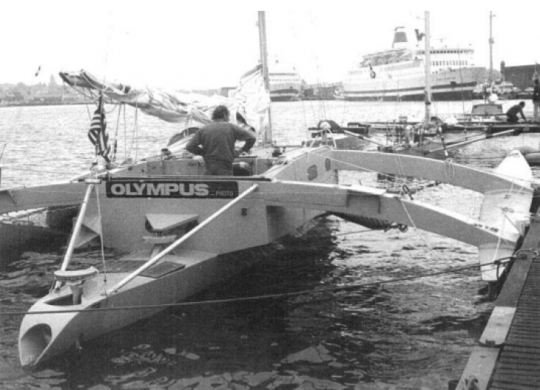
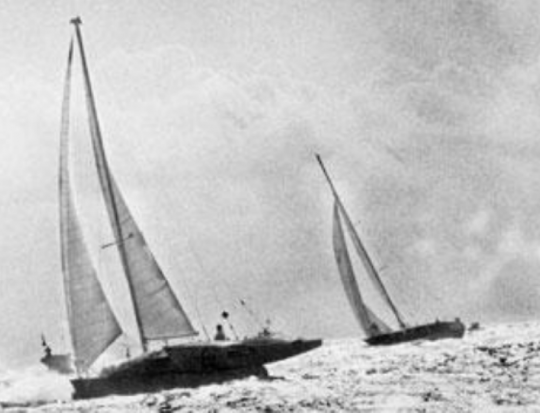
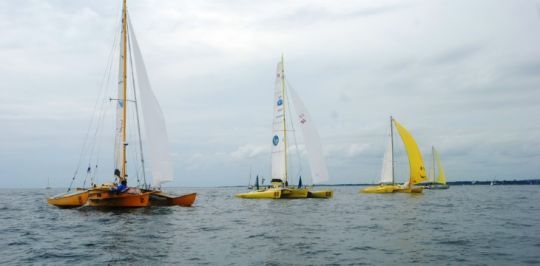


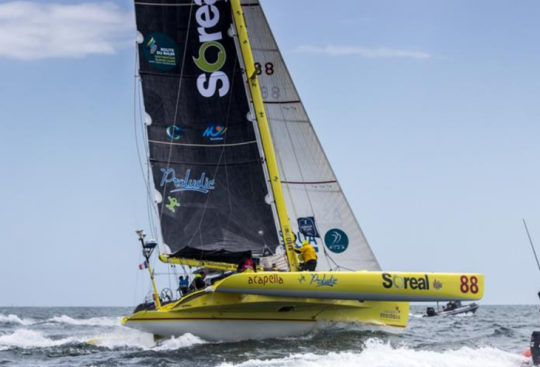
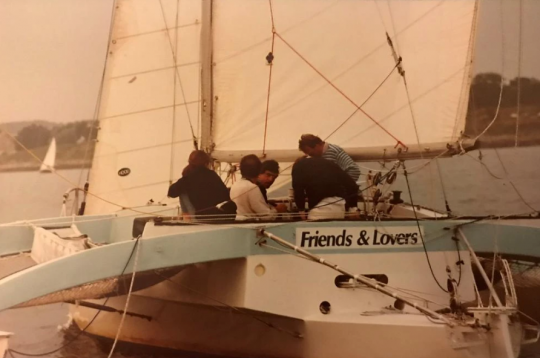
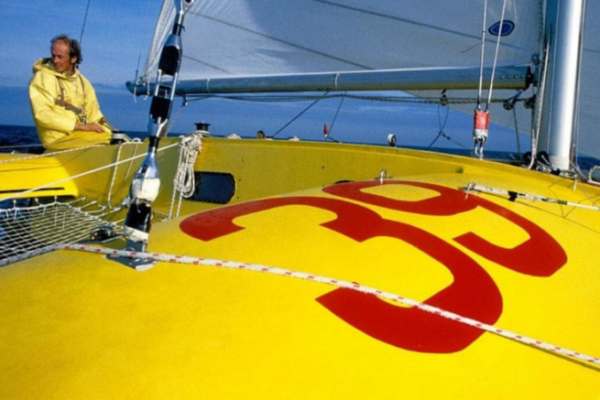
COMMENTS
Dafy Duck Marine, Edgartown, Mass (Martha's Vineyard) made all the tooling (1974-75) for the Val class Newick 31, and the first eight trimarans, including Mike Birch's "Third Turtle," Walter Green's "Friends," and builder Rory Nugent's "Edith," all who finished (2nd, 8th and 46th [equipment problems] respectively) in the 76 OSTAR. A popular and successful shorthanded […]
Val 31 is a 31′ 2″ / 9.5 m trimaran sailboat designed by Dick Newick starting in 1977. Great choice! Your favorites are temporarily saved for this session. Sign in to save them permanently, access them on any device, and receive relevant alerts. ... Val 31. 1977. Val 31 is a 31 ′ 2 ...
Val 31' trimaran. All Designs. ECHO II 38' trimaran. Rogue Wave. Moxie in the Azores ... (49.2') "island freighter" trimaran - affordable, safe, economic, flexible and regular transport for Pacific outer island communities. Native 38' SWEET at 13 knots on autopilot in the canal of St. Vincent to St. Lucia
Val In Distress 31 foot trimaran, San Rafael, CA by Dick Newick. source: Newick Val trimaran in distress - Multihull Anarchy (SA) "A friend has looked at a Newick Val in the Bay Area. It will be crushed in a couple of weeks if a new owner cannot be found. My understanding is it can be had for the leans against it $2500"
Published: August 8, 2024 (3 weeks ago) $40,000. Category. Boats. Boats / Multi-hulls. Location. Westport, Mass. 1980 Newick Val, in very good condition and ready to go. Much modified and upgraded: new float bows, New F31R mast and rig with synthetic stays and new 1×19 forestay, new custom tiller, rudder and kick up cassette, new GPS, VHF, log ...
This boat is now SOLD. The video is for information purposes only. See our website for lots of boats and yachts for sale. www.QuayBoats.co.uk Scenes ...
ABOUT NEWICK VAL 31 TRIMARAN. The Newick Val 31 Trimaran is 31 feet long and has a 25 feet beam and a draft of 1.52 meters. This 1982 Petrol Newick Val 31 Trimaran powered by Mariner 6 with 6.0 horsepower is capable of reaching a maximum speed of 6 knots and a cruising speed of 4 knots. The Newick Val 31 Trimaran is made of fiberglass.
Dick Newick Val 2 Dick Newick Val Single Handing Ocean Crosser. Update June 5th: Inspections on Rote Island delayed until 15 Aug. 2024. ... This video of "Little Wing" is the best Val 31 video I have found, displaying a good representation of the Singapore Sling layout, intetior set up,, and deck outline and boat-in-the-water.
Blue Water Surf Value Rank (BWSVR) 8833. Capsize Comfort Value Rank (CCVR)
Although small for such purpose, Damfino is a powerful successor to Newick's famous 31-foot Val trimarans, which are not much bigger and have sailed across oceans many times, including one placing second in the storm-ridden 1976 OSTAR, finishing right behind a maxi-racer (and penalized 236-foot schooner).
VAL 31: 31.16 ft / 9.50 m: 1975: ShipCanvas. KiwiGrip. Bruntons. Rudder Craft. SPW Non-BR. Pelagic Autopilots. Boater's Closet Non-BR. EWOL. bottom ads1 row1. bottom ads2 row1. bottom ads3 row2. Show Favorites . Show Favorites . WELCOME! We're glad you're here! To save a list of favorite sailboats, please login or register.
Join Date: Jul 2017. Posts: 3. Val 31' Trimaran. Hi. For sale I have a 31ft Dick Newick design trimaran. The hull is solid. Mast boom bowsprit and trampolines are in good shape. The boat is currently in Abaco bahamas but I will deliver to Florida for a buyer. The boat is in sailing condition but needs some love before she crosses an ocean ...
Find Fiberglass Newick Val 31 Trimaran trimarans for sale on Boats and Outboards. Huge range of used private and dealer boats for sale near you.
Ce VAL 31 est absolument conforme au dessin de Dick Newick et n'a pas été structurellement ou architecturalement modifié. Seul le safran a été redessiné par Jacques Fauroux et il est dorénavant fixe (2012); La dérive sandwich carbone est de 2006.Ce bateau a appartenu à Andrea Mercatelli de 1996 à 2011. ... Le trimaran a été bien ...
Browse of Newick Val 31 Trimaran trimarans for sale, or place your ad on the UK's leading boating classifieds website. Find new or used boats across the UK!
Go Bananas Racing, Gdansk, Poland. 248 likes · 48 talking about this. A classic racer! "Go Bananas" is a Val 31 Trimaran designed by Dick Newick based in Gdansk, Poland. Prawdziwy klasyk w starym...
This vessel was designed and built by the Newick Val shipyard in 1981. Key features 1981 Newick Val 31: length 9.45 meters. engine: fuel type - gasoline. 1981 Newick Val 31 refers to classes: multihull sailboats, sailing trimarans, sailboats and sailing sloops. To clarify the price $15,500 and buy Newick Val 31 - contact the offerer!
In 1978 Irens salvaged the wreck of a 31-foot Dick Newick Val Class trimaran, Jan of Santa Cruz, and shipped her from the Canary Islands to the UK to rebuild with legend-to-be Mike Birch. Together with friend Mark Pridie, Irens sailed her to class victory in the 1978 doublehanded Round Britain and Ireland Race. She became the launch pad for his ...
Multi-hull trimaran sailing in Gardiners bay NY, Black Friday 2010. Dick Newick Val
Browse of Newick Val 31 Trimaran for sale, or place your ad on the UK's leading boating classifieds website. Find new or used boats across the UK!
Newick. Newick is a yacht brand that currently has 3 yachts for sale on YachtWorld, including 0 new vessels and 3 used yachts, listed by experienced yacht brokers and boat dealerships mainly in the following countries: Sint Maarten (Dutch part), United States and U.S. Virgin Islands.
Manufactured by a variety of yacht building companies, there are currently 149 trimaran yachts for sale on YachtWorld, with 49 new vessels for sale, and 100 used and custom yachts listed. These vessels are all listed by professional yacht brokers and boat dealerships and new boat dealers, mainly in the following countries: United States, France ...
D/T-2. Trimaran, Newick. 31' x 26' x 1.5 Tons. 5-Ft. Dia. Shewmon . Force 9-10 Conditions. File D/T-2, obtained from Thomas Follett, Orange City, FL. - Vessel name Galliard, Val ocean racing trimaran designed by Richard Newick, LOA 31' x Beam 26' x Draft 5' (2' 5" board up) x 1.5 Tons - Drogue: 5-Ft. diameter Shewmon (sea anchor) on 200' x 5/8" nylon braid tether, with bridle arms of 80' each ...
Elle a été mise en œuvre par les Américains lorsqu'ils ont commencé à construire des petits trimarans de 9-10 m qui s'appelaient des Val 31, dessinés par Dick Newick. Il y en a eu 7 ou 8 de fabriqués et ils se sont très bien comportés dans différentes régates, même si il y a eu quelques accidents dramatiques.